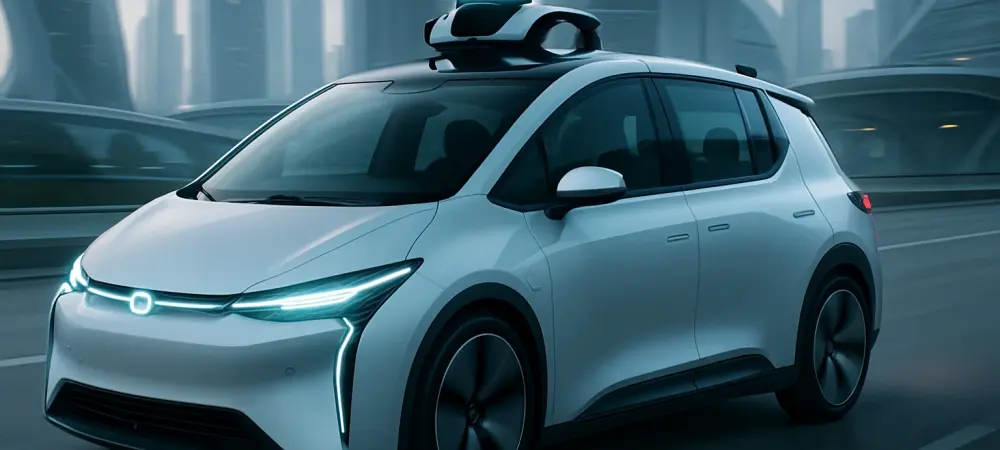Setting the Stage for a Transformative Market
Imagine a world where urban streets hum with vehicles that glide seamlessly without a single human hand on the wheel, slashing accident rates and reclaiming billions of hours lost to commuting. This vision of autonomous driving has fueled a multi-billion-dollar industry, captivating investors, tech giants, and automakers alike. Yet, as the market for self-driving technology evolves, a stark reality emerges: the path to full autonomy—defined as Level 5 under the Society of Automotive Engineers (SAE) classification—remains elusive despite significant capital and innovation. This analysis dives into the current state of the autonomous vehicle (AV) market, unpacking key trends, data-driven insights, and projections to assess whether a driverless future is a viable investment or a distant dream. By exploring technological advancements, regulatory dynamics, and consumer sentiment, this examination aims to provide stakeholders with a clear-eyed view of opportunities and risks in one of the most disruptive sectors of modern transportation.
Market Dynamics: Trends, Data, and Future Projections
Current Landscape: Robotaxis Lead the Charge
The autonomous driving market has witnessed measurable growth in niche applications, particularly with robotaxi services carving out a foothold in urban centers. Companies like Waymo, a subsidiary of Alphabet, have emerged as frontrunners, facilitating over 250,000 weekly trips in geofenced areas such as Phoenix and San Francisco. This segment reflects a practical deployment of full autonomy, albeit under controlled conditions, with fleet-based models dominating over individual ownership due to their scalability and regulatory feasibility. Market data indicates that robotaxi operations have expanded significantly in tech-forward regions, with firms like Baidu and WeRide scaling services in Chinese cities such as Beijing and Guangzhou, pointing to a localized but growing acceptance of AV technology. This trend underscores a shift in focus from broad consumer adoption to specialized, shared mobility solutions as the primary revenue driver in the near term.
Technological Barriers: Edge Cases Stymie Growth
Despite these advances, the market faces substantial technical challenges that temper growth forecasts. Autonomous systems excel in predictable environments, often surpassing human drivers in safety per mile traveled, as evidenced by internal data from leading developers. However, edge cases—rare and unpredictable scenarios like erratic pedestrian behavior or complex urban intersections—continue to expose vulnerabilities. High-profile incidents, including accidents involving GM’s Cruise that resulted in permit revocations in California, have not only highlighted these gaps but also impacted investor confidence. The complexity of programming for every conceivable situation suggests that while incremental improvements in machine learning and sensor technology are underway, the timeline for overcoming these hurdles could stretch well into the next decade, affecting market expansion and adoption rates.
Regulatory Environment: A Fragmented Framework
Regulation represents another critical factor shaping the autonomous driving market, with policies varying widely across regions. In the United States, only a select number of states permit AV operations, primarily for fleet services under stringent oversight, which limits broader deployment. Conversely, markets in China demonstrate a more progressive stance, with cities approving extensive robotaxi networks, fostering faster growth for local players. This disparity creates a fragmented global landscape, posing risks to multinational firms seeking uniform scaling strategies. Analysts project that harmonized international standards, if achieved within the next few years (from 2025 to 2029), could unlock significant market potential, but until then, regulatory caution will likely constrain the pace of investment and innovation, particularly for Level 5 aspirations.
Consumer Sentiment: Trust as a Market Driver
Public perception plays an outsized role in the AV market’s trajectory, with trust acting as both a barrier and a potential catalyst. Recent surveys, such as those conducted by AAA, reveal that a mere 13% of Americans express willingness to ride in a self-driving car, though this figure shows a slight upward trend. Skepticism often stems from publicized setbacks, which overshadow statistical safety advantages in controlled settings. Regional differences further complicate market dynamics, with tech-savvy hubs near Silicon Valley exhibiting greater openness compared to rural areas. For the market to expand, sustained efforts in public education and transparent safety demonstrations are essential, as consumer acceptance directly influences demand for both fleet and personal AV solutions, impacting long-term revenue projections.
Future Outlook: Gradual Evolution Over Rapid Disruption
Looking ahead, market projections suggest a trajectory of gradual progress rather than transformative upheaval. Robotaxi services are poised for continued expansion, with plans for production scaling—such as Waymo’s target of a factory producing 2,000 vehicles annually—indicating robust growth in urban shared mobility. Diversification into robovans and robobuses by companies like WeRide further broadens application scope, potentially tapping into logistics and public transit markets. However, full Level 5 autonomy for private vehicles remains a distant prospect, with industry consensus pointing to hybrid models—combining human oversight with advanced automation—as the dominant interim solution. Economic models favoring fleet ownership over individual purchases are likely to reshape market structures, prioritizing shared services and subscription-based revenues over traditional sales.
Reflecting on the Path Traveled
Looking back on this market analysis, the journey of autonomous driving reveals a landscape marked by promising yet uneven strides. Robotaxis and lower-level autonomy features stand out as tangible successes, showcasing the technology’s potential in constrained environments. However, persistent technical challenges, regulatory fragmentation, and lukewarm public trust act as significant headwinds, slowing the march toward a fully driverless reality. For stakeholders, the strategic imperative is clear: focus on incremental innovation through advanced driver-assistance systems and controlled deployments while forging partnerships with regulators to craft safety-first policies. Investors and automakers are encouraged to pivot toward fleet-based models as a near-term revenue stream, while consumers need accessible education on automation’s benefits and limits to ease adoption. The road ahead demands collaboration across sectors to align technological breakthroughs with societal readiness, ensuring that the vision of autonomous mobility, though delayed, eventually transforms transportation in meaningful ways.

